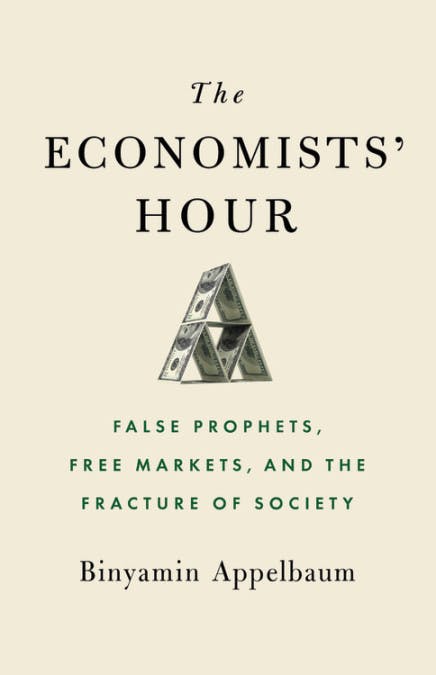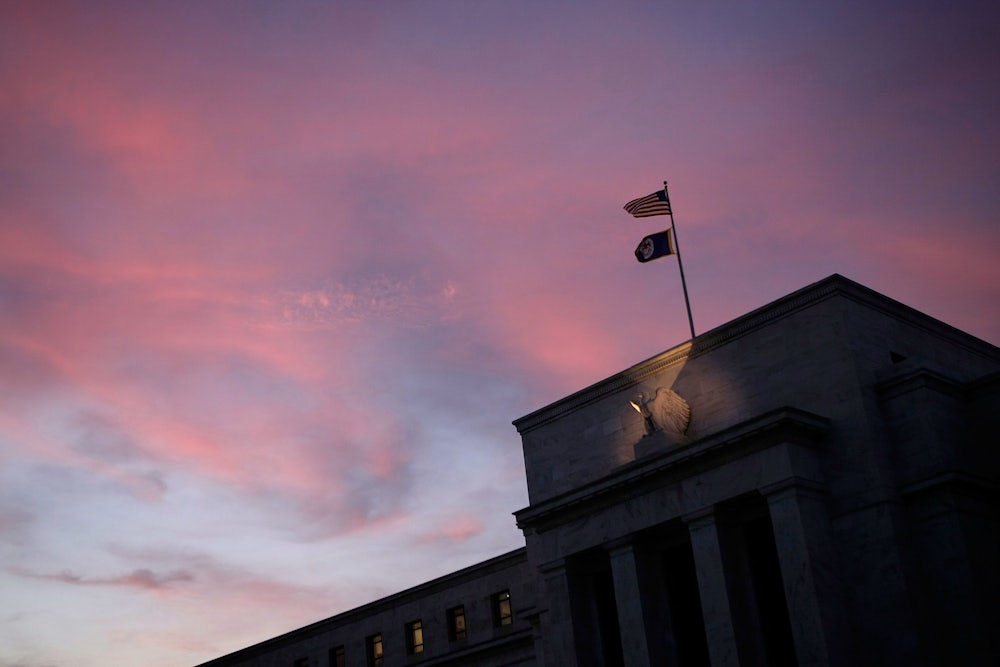In 1984, a two-year-old named Joy Griffith climbed onto her grandfather’s reclining sofa chair to watch cartoons. At one point, she fell between the collapsible footrest and the seat. The footrest trapped her head, and she began to suffocate. When she was finally found, she was blue and lifeless. Police officers extracted her body from the chair and resuscitated her. They were successful, but she had been deprived of oxygen for too long. The toddler had permanent brain damage. From then on out, she lay in a vegetative state in a hospital.

In June of 1985, the Consumer Product Safety Commission issued a “national consumer alert” about the type of sofa chair that strangled Griffith. But the commission still needed to decide if they would require design changes. So Warren Prunella, the chief economist for the Commission, did some calculations. He figured that 40 million chairs were in use, each of which lasted ten years. Estimates said modifications likely would save about one life per year, and since the commission had decided in 1980 that the value of a life was one million dollars, the benefit of the requirement would be only ten million. This was far below the cost to the manufacturers. So in December, the commission decided that they didn’t need to require chair manufacturers to modify their products. If this seems odd today, it was then too—so odd, in fact, that the chair manufacturers voluntarily changed their designs.
Prunella’s calculations were the result of a growing reliance on cost-benefit analysis, something that the Reagan administration had recently made mandatory for all new government regulations. It signaled the rise of economists to the top of the federal regulatory apparatus. “Economists effectively were deciding whether armchairs should be allowed to crush children,” Binyamin Appelbaum writes in his new book The Economists’ Hour. “The government’s growing reliance on cost-benefit meant that economists like Prunella were exercising significant influence over life and death decisions.” Economics had become a primary language of politics.
The title of the book refers to a period that Appelbaum defines as being between 1969 and 2008. For him, this was a time when the policies that economists almost universally endorsed—tax breaks, austerity, deregulation, free trade, monetarism, floating exchange rates, reduced antitrust enforcement, low inflation, among others—were enacted. It is a period when market fundamentalism triumphed. Appelbaum tells the story of each of these economic ideas in turn, often starting in the 1940s or 1950s and tracing its creation and enactment to the present day. This structure causes the book to feel like a recurring nightmare that differs only slightly upon each retelling. First, everything is fine in the sunny fields of the booming post-war era and then somehow you’re back in today’s fetid austerity swamps.
Each story begins in the mid-century, when the New Deal created a new need for economists. The New Deal inflated the size of the federal government, and politicians turned to economists to make sense of their new complicated initiatives and help rationalize their policies to constituents. Even Milton Friedman, the dark apostle of market fundamentalism, admitted that “ironically, the New Deal was a lifesaver.” Without it, he said, he may have never been employed as an economist. From the mid-1950s to the late 1970s the number of economists in the federal government swelled from about 2,000 to 6,000.
The New Deal also gave rise to cost-benefit analysis. Large projects, like dam building or rural electrification, needed to be budgeted and constrained. In 1939, Cambridge economist Nicholas Kaldor asserted that the political problem with cost-benefit analysis—that someone always loses out—wasn’t a problem. This was because the government could theoretically redirect a little money from the winners to the losers, to even things out: For example, if a policy caused corn consumption to drop, the government could redirect the savings to aggrieved farmers. However, it didn’t provide any reason why the government would rebalance the scale, just that it was possible. What is now called the Kaldor-Hicks principle, “is a theory, “ Appelbaum says, “to gladden the hearts of winners: it is less clear that losers will be comforted by the possession of theoretical benefits.” The principle remains the theoretical core of cost-benefit analysis, Appelbaum says. It’s an approach that sweeps the political problems of any policy—what to do about the losers—under the rug.
Regulations on corporations increased through the New Deal and into the 1970s. Richard Nixon’s administration introduced both the Environmental Protection Agency and the Occupational Safety and Health Administration. Corporations were on the defensive, but soon found a powerful ally in economists, a vast majority of whom opposed regulation as inefficient. Corporations began to argue that if the cost of compliance to a new regulation (say seatbelts or lead remediation) exceeded the benefit, it shouldn’t be implemented. The government, starting at the end of Nixon’s administration and continuing to this day, agreed.
Cost-benefit analysis hinged on an ever-changing calculation of the monetary value of a human life. If a life could be shown to be expensive, regulation could be justified. If not, it would be blocked or scrapped. The EPA, in 2004—to allow for more lax air pollution regulations—quietly sliced eight percent off their value of human life, and then another three percent in 2008 by deciding to not adjust for inflation. The fluctuating value of life was a seemingly rational but conveniently opaque method for making political decisions. It simultaneously trimmed away the gray areas of political discourse by reducing the debate to a small set of numbers and obscured the policy in hundreds of pages of statistics, figures, and formulas. This marriage of rational simplicity and technocratic complexity provided cover for regressive policies that favored corporations over taxpayers. Economists reduced a question that dogged political philosophers for centuries—about how much harm is acceptable in a society—to a math problem.
As Cass Sunstein, a contemporary cost-benefit proponent in Barack Obama’s administration, said, “The United States experienced a revolution. No gun was fired. No lives were lost. Nobody marched. Most people didn’t notice. Nonetheless, it happened.”
The Economists’ Hour jogs down many, if not all, of the well-worn, crowded paths in the forest of recent economic history: the Volcker Shock, the abandonment of Bretton-Woods, financialization of mortgages, Pinochet’s neoliberal repression in Chile, deregulation of air travel, the list goes on. They are all deftly told. Appelbaum duly mentions the failures of these myriad economic policies, like the Federal Reserve’s callous indifference to the havoc caused when scores went unemployed because of sky-high interest rates in the 1980s. But in Appelbaum’s concluding chapter, his analysis sags. He offers few solutions, aside from a few sentences on the importance of labor unions in counterbalancing the power of corporations. But maybe this makes sense. Appelbaum is something of a creature of the system that economics built, a reporter who once covered the Federal Reserve for The New York Times, even arguing in the book that, beginning in the 1970s, capitalism “became a self-satisfied monopolist in the marketplace of ideas, with predictable consequences: in the absence of alternatives, it was difficult to muster the will to deal with its evident shortcomings.” This, in some ways, explains where the book fails to deliver. Appelbaum, like most of us, stands in the vast shadow of the economists’ monolithic, totalizing, yet inaccessible ideology. But buried in the book are germs of truly useful ideas.
Appelbaum shows the strangely high degree of consensus in the field of economics, including a 1979 survey of economists that “found 98 percent opposed rent controls, 97 percent opposed tariffs, 95 percent favored floating exchange rates, and 90 percent opposed minimum wage laws.” And in a moment of impish humor he notes that “Although nature tends toward entropy, they shared a confidence that economies tend toward equilibrium.” Economists shared a creepy lack of doubt about how the world worked.
But worse, they were wrong. If you look at the economic theories put forth during the economists’ hour—from Friedman’s monetarism to Arthur Laffer’s supply-side economics—Appelbaum, like many others, finds the theories often demonstrably did not do what they were supposed to do. Monetarism didn’t curb inflation, lax antitrust and low regulation didn’t spur innovation, and low taxes didn’t increase corporate investment. Big economic shocks of the 1970s, like the befuddling “stagflation,” provided reasons to abandon previous, more redistributive economic regimes, but a reader still burns to know: How could economists be so wrong, so often, and so clearly at the expense of the working people in the United States, yet still ultimately triumph so totally? It’s likely because what economists’ ideas did do, quite effectively, was divert wealth from the bottom to the top. This entrenched their power among the winners they helped create.
So if you squint, what Appelbaum presents could be seen as a picture of a dramatic class-war, a conservative counter-revolution in reaction to the New Deal government, duplicitously legitimized by a regressive political theory: economics. Or as a more bracing economics writer, John Kenneth Galbraith, once put it: “What is called sound economics is very often what mirrors the needs of the respectably affluent.”
In his conclusion, Appelbaum argues that the economists’ hour is over: Now we have a president who once wrote “trade is bad” in the margins of a speech on tariffs. However, economic doctrines simply aren’t coherent enough for one person to thoroughly reject. Free market cheerleaders like Friedman were advocates of both LBGTQ rights and immigration, and of deliriously repressive right-wing military regimes all over the world. And it is important that Donald Trump’s only major legislative victory was a regressive tax-cut straight out of the supply-side playbook, something Appelbaum spends an entire chapter chronicling. I’m not convinced the hour is over. Appelbaum’s book shows economists’ dramatic impact on government policy, and thus reveals economics to be not an abstract, disinterested science but a moral and political science all to itself. It’s politics for the technocrats and the well off.
Economics has failed to come up with an answer for a fundamental political question: What do we do about the losers? A failing to answer this question, almost by definition, creates inequality if not on purpose then through inaction. Due to the high degree of consensus among economists, the answer is likely to be found not in a new, more compassionate version but in a different field entirely.
When John Maynard Keynes wrote his tragically optimistic essay Economic Possibilities for Our Grandchildren, he thought that the automation of compound interest would create a swift-running river of capital that would be so deep and so wide that there would be no scarcity, and thus much less need for economists. Keynes thought that soon they might be about as important as dentists. Of course, instead, the opposite happened. Economists now have an outsized hand in running the government and as sociologist Marion Fourade finds, economics is the best paid and most cited field in the social sciences and economists monopolize the marketplace of ideas. In the 1950s, a Columbia economist complained he made as much as a skilled carpenter. Until we get back to that time, the clock will continue to run on Appelbaum’s nightmarish economists’ hour.
